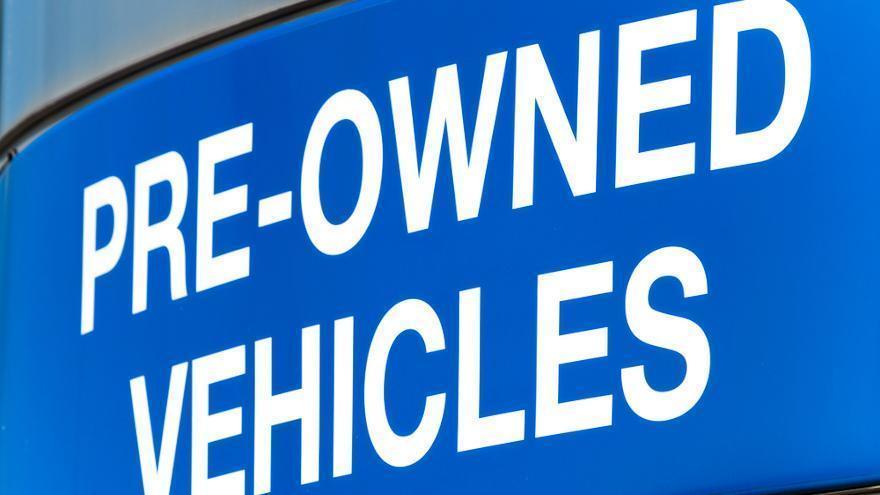CPO sees ‘quickest rebound’ in auto retail recovery

It’s almost certain that 2020 will not be another record year for the certified pre-owned vehicle market, and annual CPO sales are likely to fall about 7% from where they finished 2019, the ninth straight best-ever year.
But right now, certified is the hottest part of the auto retail market, analysts said during Cox Automotive’s Q3 2020 U.S. Auto Sales Forecast Call in late September.
“So far, the certified pre-owned market has seen the quickest rebound in sales performance, making CPO the strongest performing segment of the auto retail market,” said Zo Rahim, the company’s manager of economics and industry insights, during the call.
“Consumer demand for these … like-new used vehicles has really improved from the peak of the crisis back in April,” Rahim said.
Though down 9% this year and forecasted by Cox Automotive to drop from 2.8 million last year to 2.6 million in 2020, the expected full-year tally remains in same ballpark that annual CPO sales have been over the last handful of years.
Cox Automotive chief economist Jonathan Smoke (who is also a DJ with an ear for auto tunes) echoed that sentiment later in the call.
“Used overall is really the strongest part of the market … we now see used as ending the year down only 10% in total” compared to the new market, which is expected to see an overall drop of 8% but a 12% decline in retail, Smoke said.
“But within used, it’s definitely used retail that’s recovering the strongest. And within used retail, it’s really certified pre-owned … if we do hit that 2.6 million that Zo mentioned, certified pre-owned would end the year down only 7%,” Smoke said.
To clarify some of that terminology, Cox Automotive considers used retail sales to be those coming from a dealer and excluding private-party sales.
Overall market forecast
Overall, Cox Automotive is forecasting 36.1 million used-vehicle sales for 2020, which would be down from 40.0 million in 2019. However, that figure is expected to rebound to 39.3 million next year.
And within used retail (again, sales from franchised and independent dealers), Cox is expecting sales to fall from 20.8 million to 19.1 million this year, but then rebound and surpass 2019 volumes with 21.2 million sales in 2021.
“Here, we are expecting a quick rebound in used sales,” Rahim said. “The used market is less volatile, so stability see sales in this market fall less and rebound faster.”
During the Q&A portion of the call, analysts were asked about the divide between private-party and retail used sales. Rahim noted how the retail side of used has gained share from private-party sales, as customers turn to buying cars from dealers.
Not to mention, the major emphasis that dealers are putting on used cars, particularly the franchised variety, who have upped their pre-owned operations in 2020.
“We have seen the share of private-party sales in the used-vehicle market come down, and this is a trend that’s been happening for the last decade or so as both franchised dealers and independent dealers, of course, focus on used-vehicle operations,” Rahim said. “And you’ve seen it especially this year from the franchised dealers, regarding their announcements and moving a lot of their focus on used-vehicle sales and used-vehicle operations.”
In fact, major dealer groups like Sonic Automotive and AutoNation have announced expansion plans in their standalone used-car store programs.
Recent sales data
Looking at data on more recent used-car sales periods, Cox Automotive’s analysis of Motor Intelligence data indicates there were 238,498 CPO sales in August.
Separately, the latest commentary from KAR Global chief economist Tom Kontos, which cited NADA data, found that franchised and independent dealers increased their August retail used sales by 5.2% from July. They improved 0.9% year-over-year. Citing Autodata, Kontos indicated that August showed an 8.6% year-over-year decline in certified sales, which fell 6.5% from July.
Meantime, a Cox Automotive presentation slide showing a weekly rolling 30-day retail sales over the last 12 months (through Sept. 14) displays a V-shaped recovery that bottomed in late April, reached a peak in early summer and gradually moved downward since then.
“We’ve had a substantial, V-shaped recovery in the used market, but now sales are starting to taper off,” Cox Automotive senior economist Charlie Chesbrough said. “We can see that the fast recovery that we had in the used market is really starting to wane quickly.”
The same slide shows the annual change in used. Again, a V-shaped recovery, followed by a summertime peak and slowdown since then.
As of the most recent data point (Sept. 14), the year-over-year comparison is “now in negative territory,” Chesbrough said.
“Where it goes from here is what we’re watching. Because there’s very tight inventory, it may continue the down trajectory or we might start to see it stabilize here at a lower level,” he said.
Despite the recovery slowing a bit recently, Cox Automotive’s expectations for annual used-vehicle sales totals have improved, though they remain conservative.
Smoke points out that, “We clearly have seen evidence that used is performing now much like it typically does in a recession, meaning it doesn’t see quite the decline that the new-vehicle market does, because consumers are needing transportation and are seeking out value, but at the same time, credit is tightening, making it difficult for those with less-than-perfect credit to be able to afford new vehicles, so the used market tends to outperform.
“And the effect of the downturn was really isolated to the end of March and April.”
For more: As part of the presentation, Smoke includes his usual list of songs that reflect the current automotive environment. "DJ Smokey Smoke's" complete fourth-quarter playlist can be found here on Spotify.

 View The Latest Edition
View The Latest Edition

